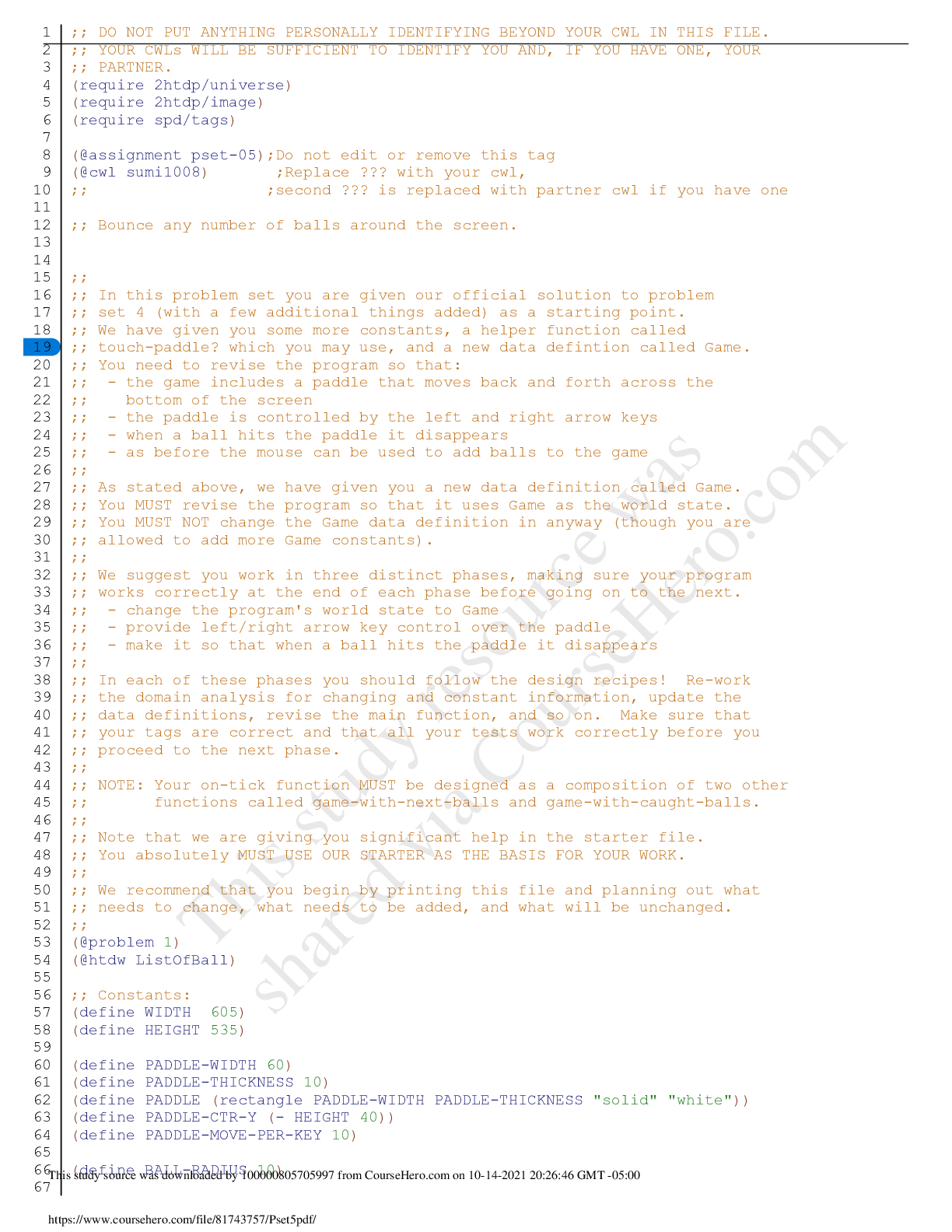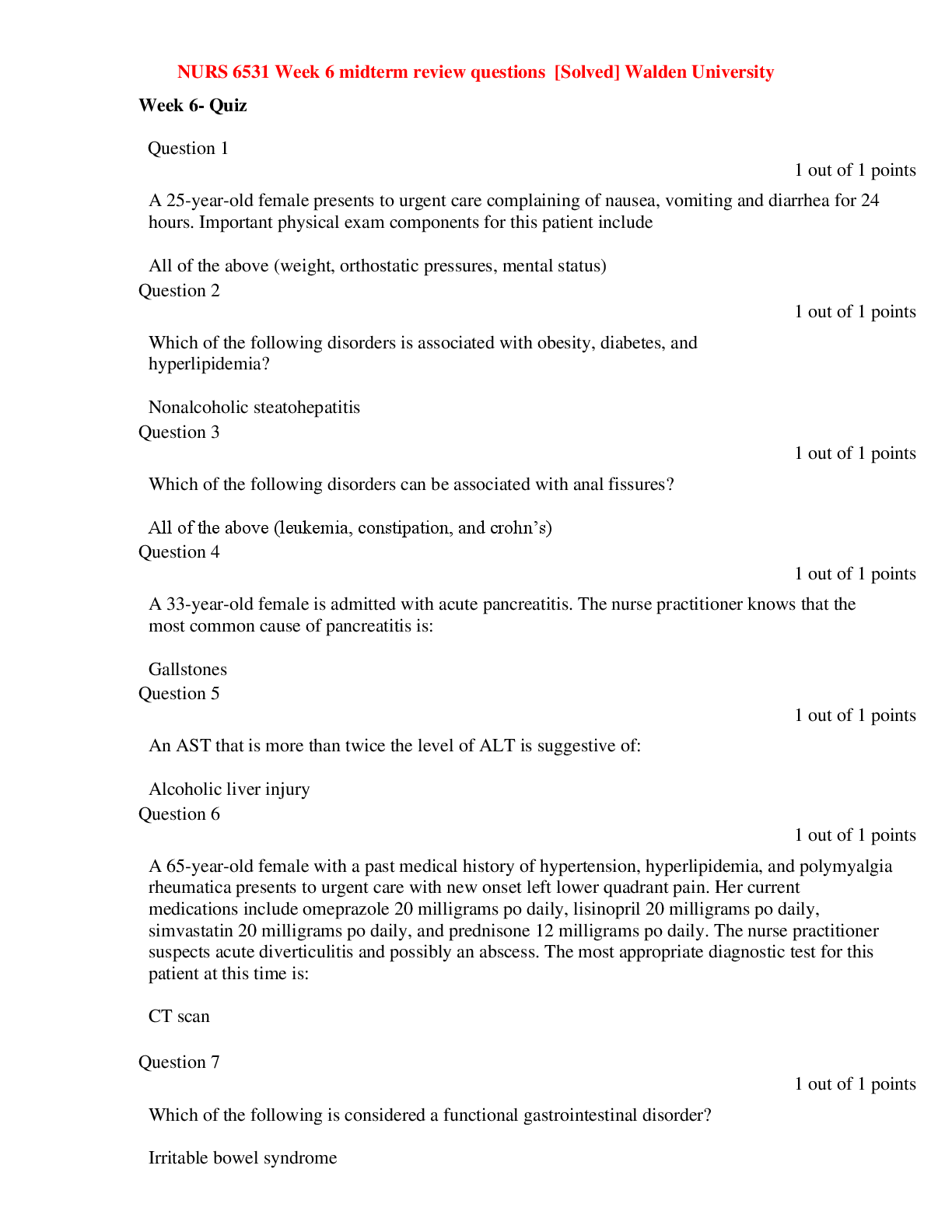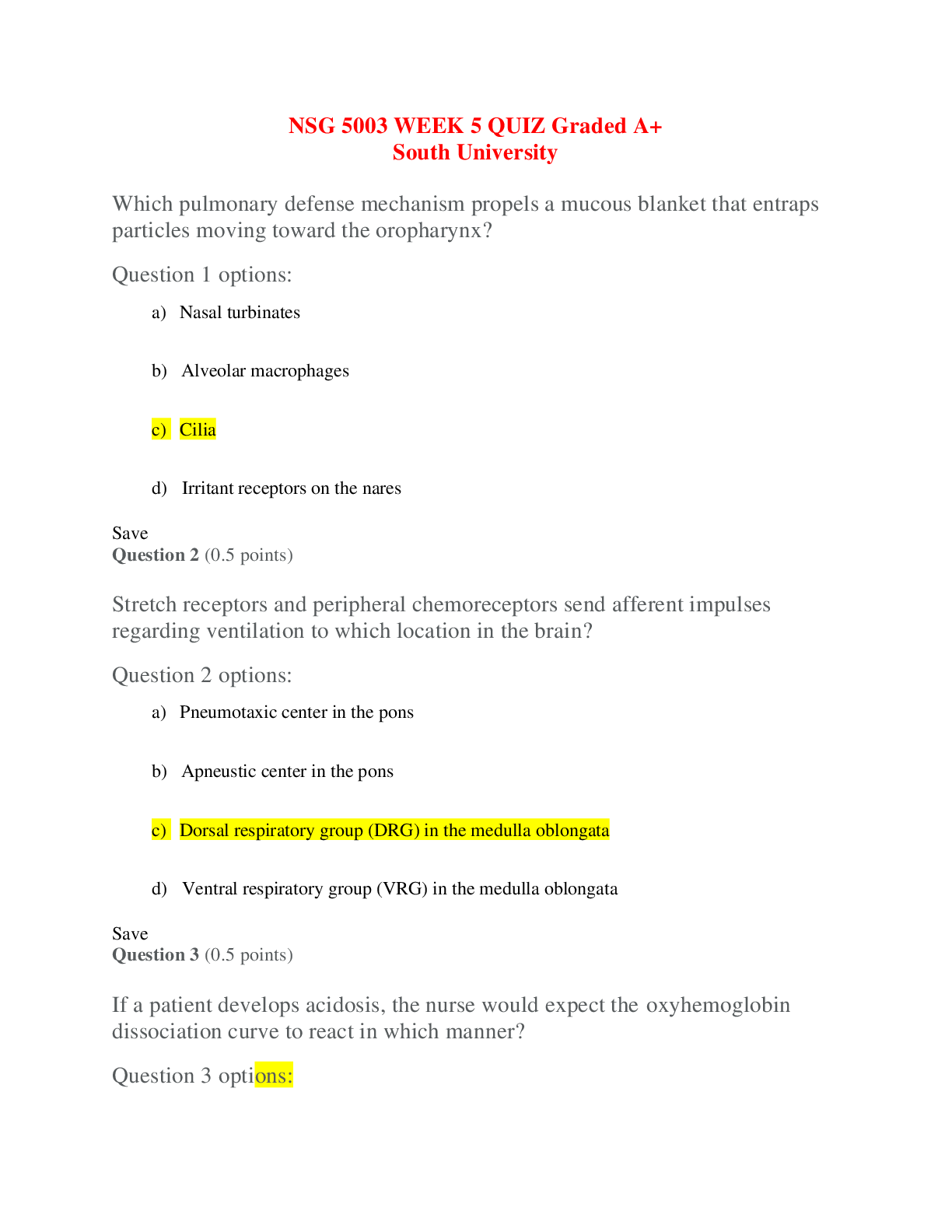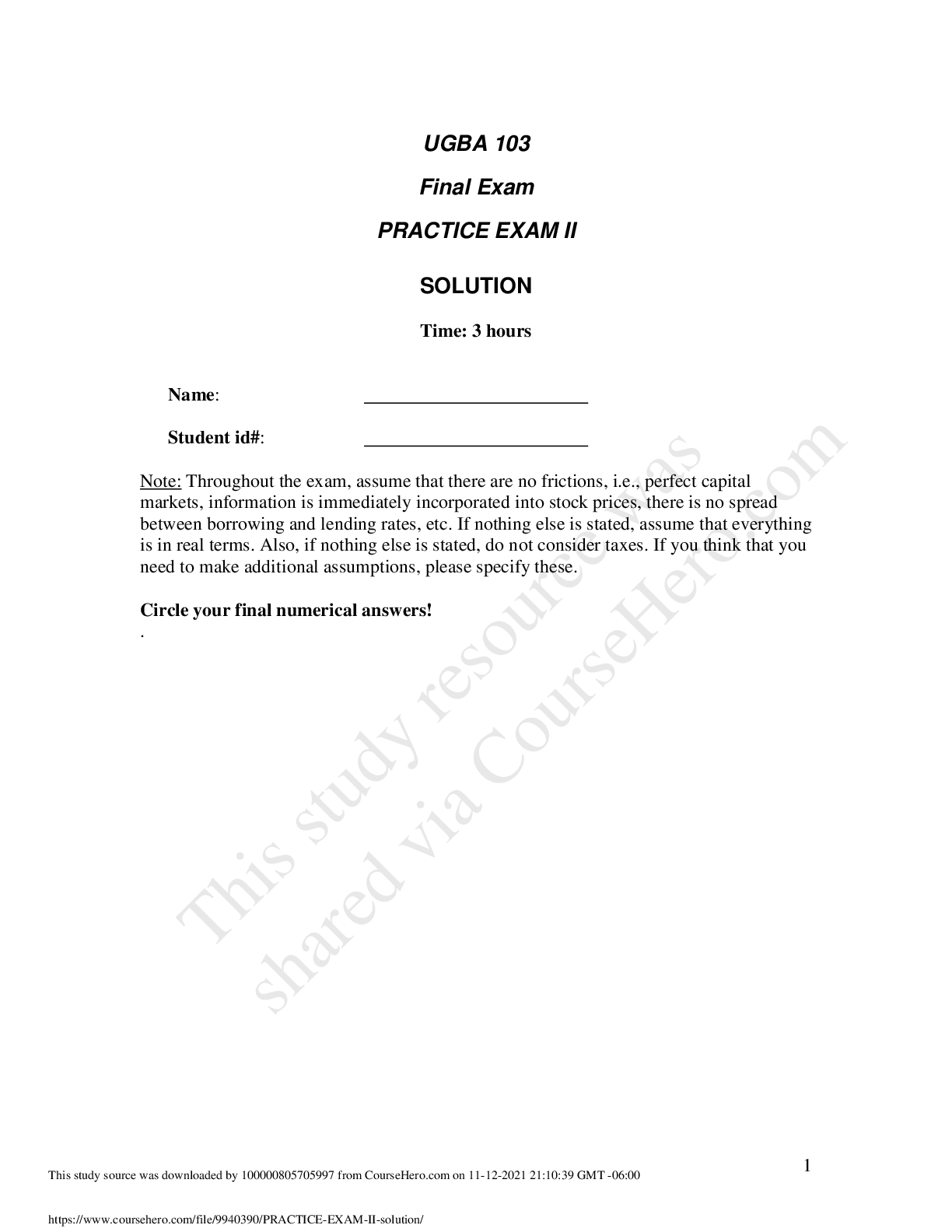Business > QUESTIONS & ANSWERS > [Solved] PSYC 421 Part 2 (All)
[Solved] PSYC 421 Part 2
Document Content and Description Below
SPSS Assignment Part 2 Instructions When tests are created, they usually are evaluated for their usefulness. To determine the usefulness of a test, the authors and/or publishers typically assess i... tspsychometric properties. Psychometric properties refer to quantifiable characteristics of a test that relate to its statistical strength or weakness. The main two features that are used to determine whether or not a test is statistically “strong” are reliability and validity. As you recall from your textbook readings, there are various types of reliability and validity as well as various ways to quantify each. For the present assignment, you will be evaluating the reliability and validity of the CES-D using the fictitious data set provided in Bb. In order to assess/quantify the reliability of the CES-D, you will be calculating a statistic called Cronbach’s Alpha. Cronbach’s Alpha is used to estimate a type of reliability called “internal consistency,” or the degree to which each test question consistently measures the same underlying construct(s). In order to assess/quantify the validity of the test, you will be calculating a statistic called Pearson’s Correlation Coefficient between total scores on the CES-D and scores on the Beck Depression Inventory (BDI), another test designed to measure depressive symptoms. When researchers find the correlation between two tests designed to measure the same underlying construct(s), they are providing evidence for the “convergent validity” of the tests. Before beginning your analyses, please review the 20 questions that comprise the CES-D Scale. When we sum participants’ scores on all 20 questions, we obtain a Total Score. Several researchers agree that, in addition to a total score, participants’scores can be categorized into four (4) subscales: Depressive Affect (DA), Well-Being (W), Somatic (S), and Interpersonal (I) (e.g., Hertzog, Van Alstine, Usala, Hultsch, and Dixon, 1990; Knight, Williams, McGee, and Olaman, 1997). Each subscale comprises a different subset of questions and assesses a different feature of depressive symptomology. The table below indicates which questions on the CES-D Scale correspond to each subscale. CES-D Subscales DA = Depressive Affect, W = Well-being, S = Somatic, I = Interpersonal Q#1 S Q#2 S Q#3 DA Q#4 W Q#5 S Q#6 DA Q#7 S Q#8 W Q#9 DA Q#10 DA Q#11 S Q#12 W Q#13 S Q#14 DA Q#15 I Q#16 W Q#17 DA Q#18 DA Q#19 I Q#20 S For this assignment, you will: 1. Calculatemeasures of central tendency and variability for the total score and each of the four (4) subscale scores presented in the SPSS data file, and then create a single table to present the descriptive statistics that you calculated. 2. Create the appropriate graphs to illustrate the distribution of scores for the total score and each of the four (4) subscales. (Five graphs in total) 3. Calculate Cronbach’s Alpha for the total scale and for each of thefour subscales, and then create a single table to present the results of your reliability analyses. 4. Calculate a Pearson’s Correlation Coefficient between the CES-D total scores and scores on the BDI, and then create a single table to present the results of your validity analysis. 5. Write a verbal summary of all of your findings. This summary section will include 2 elements: a. Summarize the results of the descriptive, internal consistency, and validityanalyses using the information compiled in the table(s)/figures. b. Interpret the values that you found from the various analyses. 6. Format your table headings and figure captions according to current APA guidelines. 7. See the sample assignment posted in Bb for guidance on how to put together your assignment. Be sure to carefully review the Grading Rubric posted in the Assignment Instructions folder so that you know exactly what is expected of you when completing this assignment. This assignment is due by 11:59 p.m. (ET) on Monday of Module/Week 3. References Hertzog, C.; Van Alstine, J.; Usala, P.D.; Hultsch, D.F.; &Dixon, R. (1990).Measurement properties of the Center for Epidemiological Studies Depression Scale (CES-D) in older populations.Psychological Assessment: A Journal of Consulting and Clinical Psychology, 2(1), 64-72. doi: 10.1037/1040-3590.2.1.64 Knight, R. G., Williams, S., McGee, R., & Olaman, S. (1997). Psychometric properties of the Centre for Epidemiologic Studies Depression Scale (CES-D) in a sample of women in middle life.Behavior, Research, and Therapy, 35(4), 373–380.doi:10.1016/S0005- 7967(96)00107-6 [Show More]
Last updated: 2 years ago
Preview 1 out of 2 pages

Buy this document to get the full access instantly
Instant Download Access after purchase
Buy NowInstant download
We Accept:

Reviews( 0 )
$20.00
Can't find what you want? Try our AI powered Search
Document information
Connected school, study & course
About the document
Uploaded On
Nov 06, 2020
Number of pages
2
Written in
Additional information
This document has been written for:
Uploaded
Nov 06, 2020
Downloads
0
Views
54


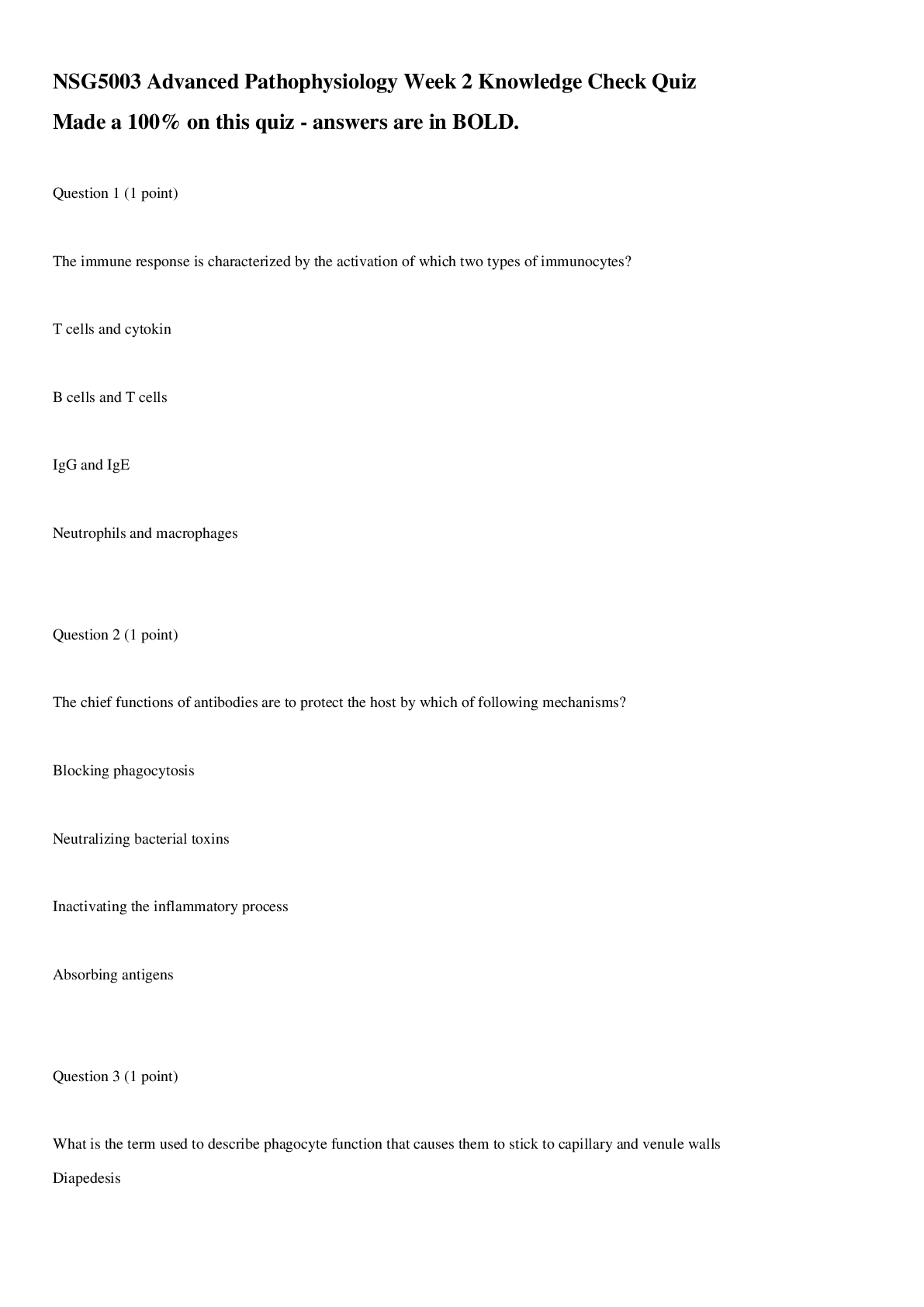
.png)
